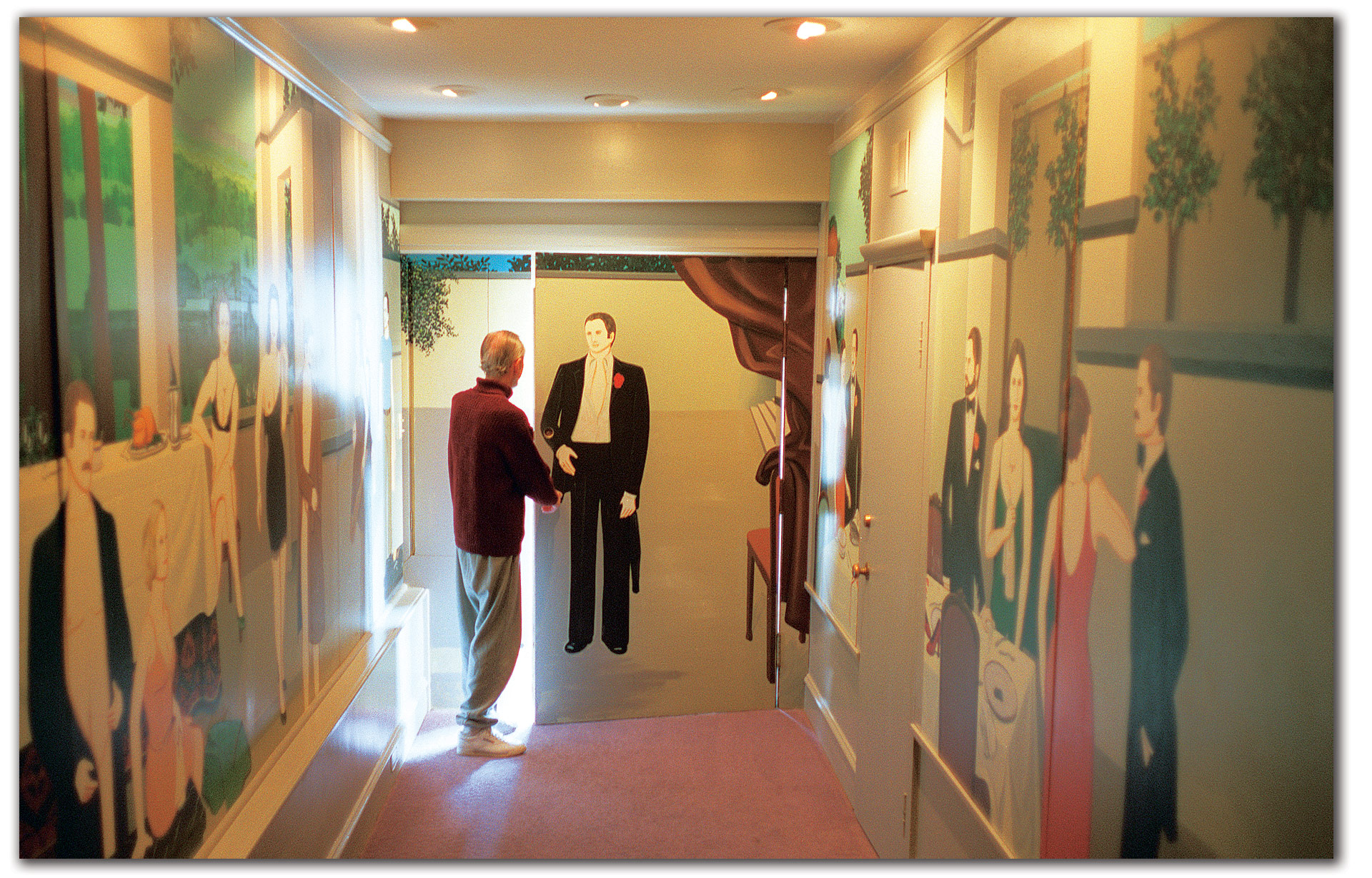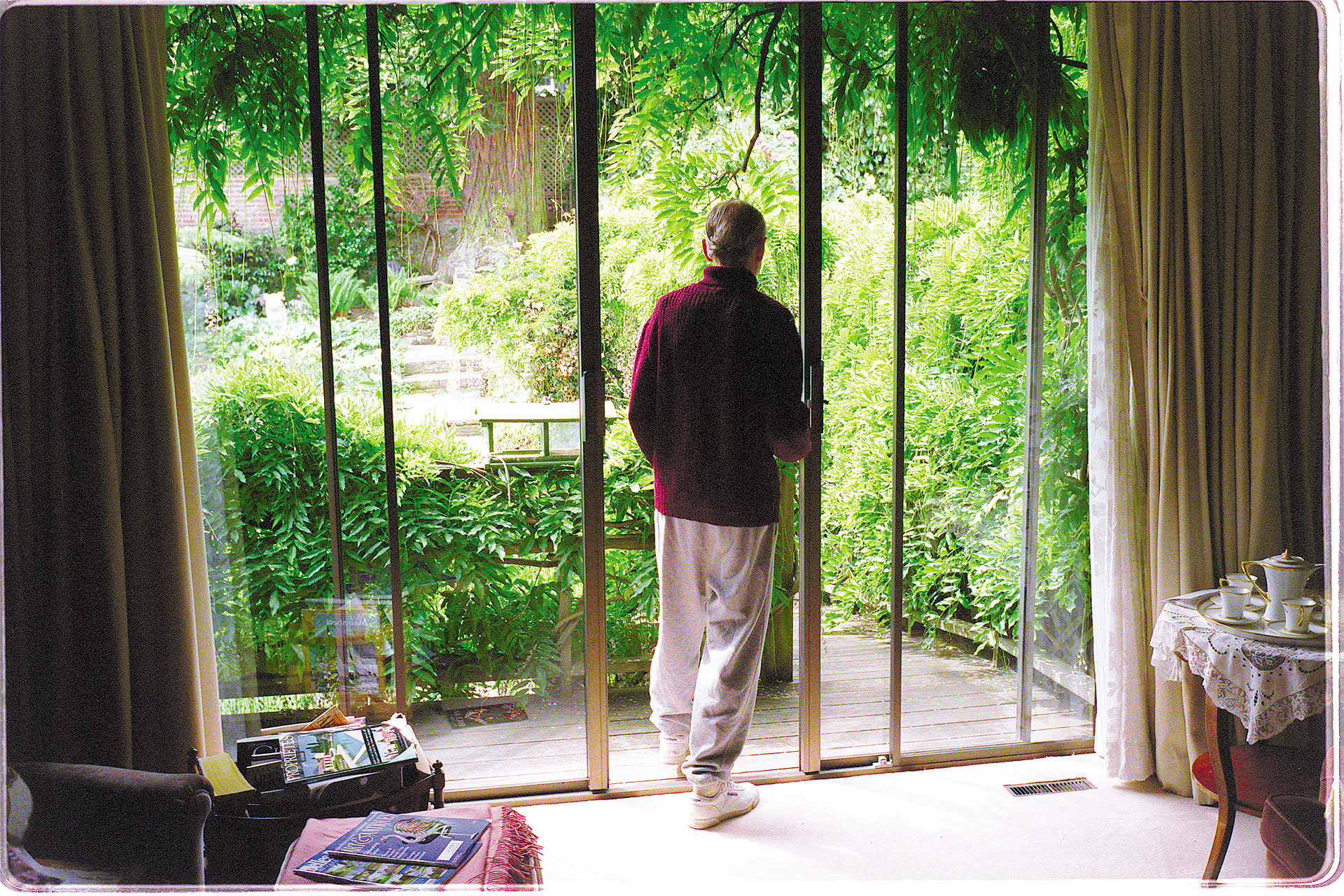EVERYTHING in life is a transition. Some of us do it in style while others crash and burn. Ultimately, we all get better at it and eventually make one final transition. You might say that the whole purpose of life—all those jibes and tacks we’ve practiced—prepare us for this final transition. That’s the theory.
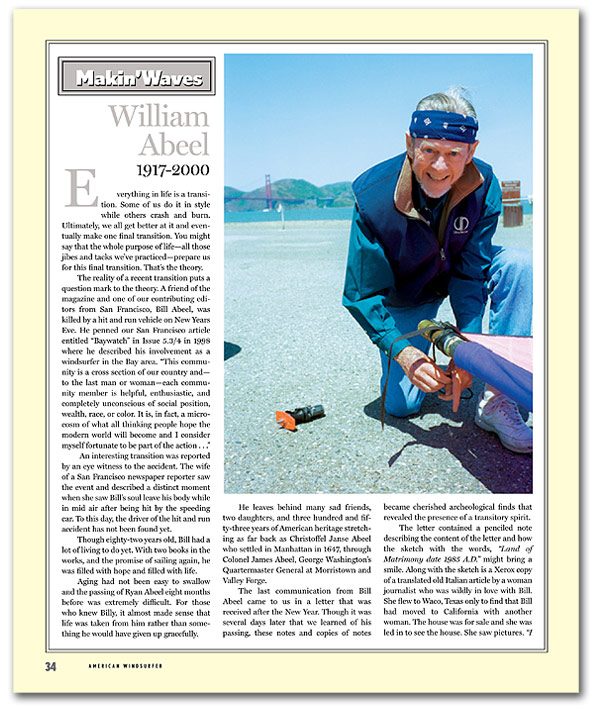
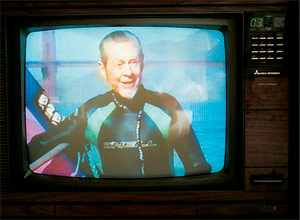
The reality of a recent transition puts a question mark to the theory. A friend of the magazine and one of our contributing editors from San Francisco, Bill Abeel, was killed by a hit and run vehicle on New Years Eve. He penned our San Francisco article entitled “Baywatch” in Issue 5.3/4 in 1998 where he described his involvement as a windsurfer in the Bay area. “This community is a cross section of our country and—to the last man or woman—each community member is helpful, enthusiastic, and completely unconscious of social position, wealth, race, or color. It is, in fact, a microcosm of what all thinking people hope the modern world will become and I consider myself fortunate to be part of the action . . .”An interesting transition was reported by an eye witness to the accident. The wife of a San Francisco newspaper reporter saw the event and described a distinct moment when she saw Bill’s soul leave his body while in mid air after being hit by the speeding car. To this day, the driver of the hit and run accident has not been found yet.
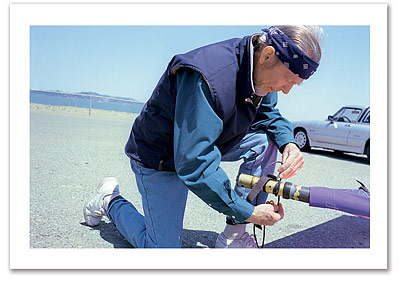
Though eighty-two years old, Bill had a lot of living to do yet. With two books in the works, and the promise of sailing again, he was filled with hope and filled with life.
Aging had not been easy to swallow and the passing of Ryan Abeel eight months before was extremely difficult. For those who knew Billy, it almost made sense that life was taken from him rather than something he would have given up gracefully.
He leaves behind many sad friends, two daughters, and three hundred and fifty-three years of American heritage stretching as far back as Christoffel Janse Abeel who settled in Manhattan in 1647, through Colonel James Abeel, George Washington’s Quartermaster General at Morristown and Valley Forge.
Advertisement
The last communication from Bill Abeel came to us in a letter that was received after the New Year. Though it was several days later that we learned of his passing, these notes and copies of notes became cherished archeological finds that revealed the presence of a transitory spirit.
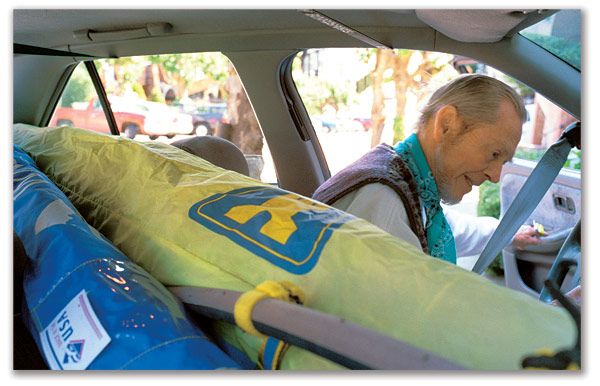
The letter contained a penciled note describing the content of the letter and how the sketch with the words, “Land of Matrimony date 1985 A.D.” might bring a smile. Along with the sketch is a Xerox copy of a translated old Italian article by a woman journalist who was wildly in love with Bill. She flew to Waco, Texas only to find that Bill had moved to California with another woman. The house was for sale and she was led in to see the house. She saw pictures. “I look around and see a picture of Abeel and a blond lady. Chills come over me. I guess she is Helen, the woman to whom I lose.”
“I look around and on another side see myself in one of his paintings. After twenty years, I’m still here! I realize that my hair was blond just like Helen’s, that we were the same age, young and beautiful. I feel very happy that I am part of his life. After all the years, he still remembers me. Tears of happiness fill my eyes . . .”
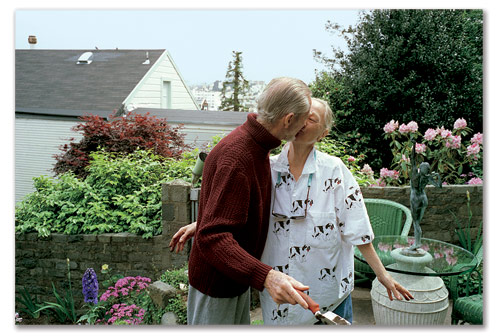
She goes on and describes how she ended up buying the house so that she could live for the rest of her life with the memories of Bill Abeel. “ . . . With tears in my eyes, I will stay here. Here I will be young again. I will forget the twenty years, until one day I will see you from the windows walking up, toward the house. Then I will run down the stairs and throw my arms around you. Then you will explain to me that you walked a lot today and need to rest next to me. I will do everything possible to make you happy and then lie next to you . . . Yes, Abeel, you will come back to me, to this house, where I will wait for you always, because then it will be you and me . . . in this house forever!!!”
The other piece in the package was a six page handwritten love note scribed in 1984 by Bill to Helen, the woman he left for California with but ultimately did not marry.
Though it may all be frivolous as stated at the end of this note it is nevertheless printed here as a eulogy to a great friend and champion of the act of windsurfing.
Dear Helen,
On the plane I started in my mind to write you a letter about “time”. I know an author who wrote a short story entitled “The Man Who Saved Time”. The protagonist became obsessed with ways he might save time and kept a chart of each day with the added minutes and seconds he managed to save by shortcuts he invented. He learned to shave and read at the same time; work and eat; shorten his eating habits; sleep less. The most difficult challenge was finding an alternative way to commute to work. In the end, he was counting seconds on the second hand of his stopwatch and failed to see the newly placed sign warning that the train crossing alarm was under repair. The last line stated that he had saved all the time he needed.
So perhaps, though I’m not sure, “time”, like money, is to be saved and also, spent.
Sometimes, it can be spent combining need with grace and pleasure. Even soldiers in battle eat something at intervals, generally three intervals during the waking day.
The Greek seige of Troy, as you may remember, lasted nine years. Little is made in history over the fact that Helen, granddaughter of Swan (Leda and Zeus) over whom the war was fought, had had it all happen to her before.
Theseus (of Minotaur fame) had earlier abducted her. After being rescued by Castor and Pallux (see just left of Orion tonight) her father married her to Menelaus, swearing her suitors to defend her. Thus, when Paris, overwhelmed by her beauty (“Is this the face that sank a thousand ships, and toppled the cloud topped towers of Ilium?” –Milton) carried her off to “ . . . the ringing plains of windy Troy”, war resulted.
Molière and others have dealt with the subject.
Homer’s Iliad was translated a couple of years ago by Robert Fitzgerald, to great plaudits by the N.Y. Times Book Review, etc., etc., “solving (Atlantic Monthly) virtually every problem plaguing translators before”.
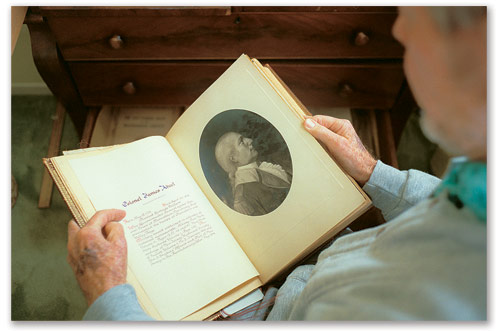
Here, it’s interesting to note that it’s generally believed Homer was truly a blind poet who lived about 700 B.C., but was writing about events that occurred 1,000 years earlier.
Computer study indicated that the Iliad was indeed all written by the same man and the Odyssey also, but at a different time, all this committed to memory and, because they rhyme, have doubtlessly come down to us word for word as he sang it. Astounding! The involvement with gods and goddesses must have been woven in with fact.
Then, Heinrich Schliemann went and dug out calculations taken from Homer (days, marches, etc.) and found both Agememno’s tomb (artifacts in Athens’ museum) and the burned gates and walls of Troy seven miles inland from the Dardenelles.
In book XI, line 660, old King Nestor, in the midst of battle, brings the wounded Aias to his tent. With Akhilleus still sulking, but pitched battle running high around them, Homer relates:
“ . . . then entering Nestor’s hut they took their seats in armchairs. Mulled wine was prepared for them by softly braided Hekamede, Nestor’s prize from Akhilleus’ plundering of Tenedos-Arinaos’ daughter. The Akhians had chosen her for Nestor, honoring excellence in council. First the girl pushed up before them a beautiful table with enamel legs. Then she set out a basket all of bronze, an onion to give relish to their wine, pale yellow honey, sacred barley meal, beside a cup of wondrous beauty, brought from Pylos by the old king: golden nails it had for studding, and four handles on it each adorned by a pair of golden doves who perched to drink, with double stems beneath. Another man would strain to budge the cup once full, clear of the table. But not Nestor: old though he was, he lifted it with ease. Now mixing Pramnian wine for them in this, the servant, like a goddess in demeanor, grated a goat’s milk cheese over the wine, upon a brazen grater, and sifted in white barley meal. The potion thus prepared, she called on both to drink.”
The juxtaposition of this scene, with their trouble, expresses to an extent, my feeling about “time” and, I’d intended to read this at our lovely gathering if time presented itself.
Actually another thing happened.
My life (and perhaps others’) seems to me like a sphere in which I live. Painted on its walls are all I’ve seen or learned—sometimes from listening or reading—but principally from my own experience. And in truth, I’m only certain of those things I’ve experienced myself.
Sometimes, and not as often as I wish, a window suddenly opens in the sphere and, through this small opening, I seem to view, for a moment only “time and knowledge” laid out like a landscape. I see, or feel, backward and forward there. As Tennyson says, in The Lady of Shalott:
“ . . . There down the river’s broad expanse. Like some bold seer in a trance. Seeing all his own mischance . . .”
I do not know what makes this happen. It happened to me once in an auto where a girl held fresh picked wild flowers I can still smell. It happened to me once where the buildings, streets, and everything else are painted snow white in Mykonos. It must be akin to the “revelation” shown in old paintings with a person kneeling and a glow above them. I suppose that the painter was expressing what he’d heard of, but had not really experienced himself. It’s more like going through a hole.
Yet, extraordinary painting, non-religious, such as some of Van Gogh’s fields, has this better said, for therein, is proof the artist “saw something” no one else could see.
Advertisement
Proof is in music with no precedent.
As I sat, looking out that window, with feather-like snowflakes drifting by, a strange feeling came over me and I knew the window was going to snap open. I waited and, up it went. I couldn’t take my eyes away and eventually I had to leave the table because it was all I could carry.
It was not mischance I saw . . . just chance . . . but for a moment, I could see it all. In fact, for that moment, I was it all. I would not have been surprised to have been told later that runners, hunters, and the quarry, explosions, all around the world had been—for those minutes—frozen in place, then like a wound mechanism stopped by one’s finger—released to go forward on their way.
I wish I could better relate what I seemed to have seen. Perhaps it’s an illusion . . . an imagining.
All three dinnings were delightful. Nestor would have approved, Homer also, perhaps Schliemann—who was so in love with Greece that he wrote for a priest to select a suitably chaste and personable young Greek girl for him to marry, married her, and if I remember correctly, lived out a happy life with her. He was conscious of “time”, now and in history, and did his best to pull them together. I doubt he worked at saving time.
Sometimes I use time as in my trip to Washington. Sometimes I spend it looking at my garden. Yesterday I went windsurfing and experienced—in the age where great, suited, mechanized teams are available to help the novice learn skiing or whatever, with exotic equipment and manuals—more nearly what old navigators felt when the world was filled with mysteries each man unraveled for himself on some lost, reaching bay swept by God’s winds.
All this may be frivolous. I cannot say that it is not. It used up six good sheets of white paper. Was there a better use for them? I can’t say there was.
Bill
February 7, 1984
